Looking back at the early life of a Wray villager and his time spent in Aden between two World Wars
and live on Freeview channel 276
William Bull, known as Billy, was born in Wray in 1905.
His father, Christopher Bull, and wife, Sarah, had retired to the village in 1903 following a long period of service in the police at various places throughout the country.
William’s story starts with his early life in the village and then moves on to his life as a lance bombardier in the Royal Artillery and his time spent in Aden during the years 1926-31.
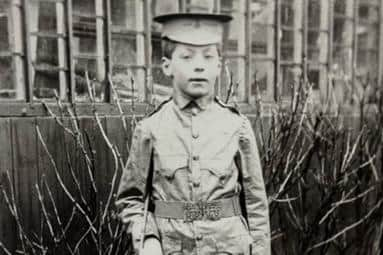

William said in his journal: “I had a wonderful childhood in Wray with my friend Norman Travis.
Advertisement
Hide AdAdvertisement
Hide Ad"We fished in the rivers using a bent pin for a hook and caught eels, known locally as ‘snigs.’
"I’d take them home and ask mother to cook them. Games were simple, involving hoops made by the blacksmith for 6d (2½ pence) or bows and arrows which we made ourselves from ash or hazel wood.
"We often played ‘tig’; in winter we’d go sledging. When the river froze, a large pool below Wenning Bridge was a good place for skating.
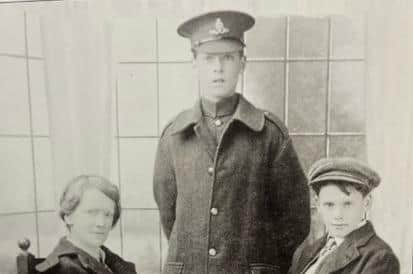

"I remember quite clearly spending a lovely evening there with my mother, who was quite a good skater.
“We were always wandering through the woods and along the riverbanks of the Hindburn and Roeburn.
"We’d go blackberry picking above Dick Hill, taking lunch and tea with us.
"In our very early days, we had our toys, not many, but those we did have were used over and over again. My paint box and a toy railway were much used.
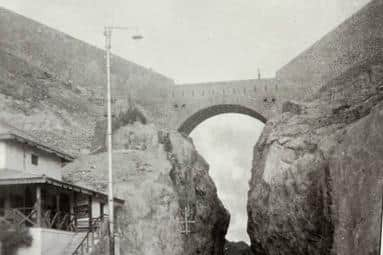

"I had a toy piano and my parents often had to listen to a concert consisting of solo piano and songs, complete with handwritten programme.
"How they must have suffered!
“I was four and a half years old when my brother, Edward, was born in August 1910.
Advertisement
Hide AdAdvertisement
Hide Ad"I walked out when this event occurred. I went to the home of the schoolmaster and explained I’d come to stay!
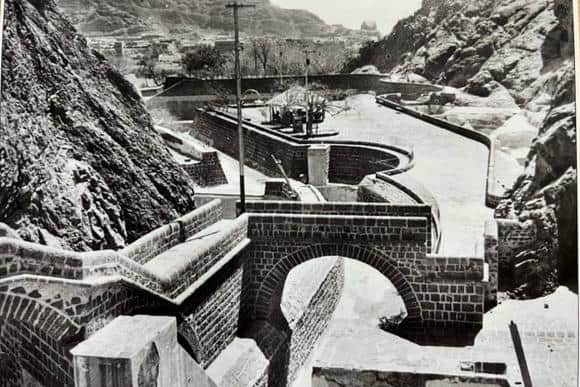

"My tale was that no one would bother with me at home so I was coming to live with them.
"The headmaster and his wife accepted this contretemps. It lasted a week and then I went home.
“Winter evenings were busy times preparing for school concerts. I was always in them and dressed up as a soldier to sing ‘It’s a Long Way to Tipperary’.
"I was nearly nine years old when World War One started.
"Being August 4, our summer holidays had started and I’d gone off to Hornby to see the soldiers coming into camp.
"Horses were galloping backwards and forwards, guns and gun teams were coming and going. It was all very exciting.
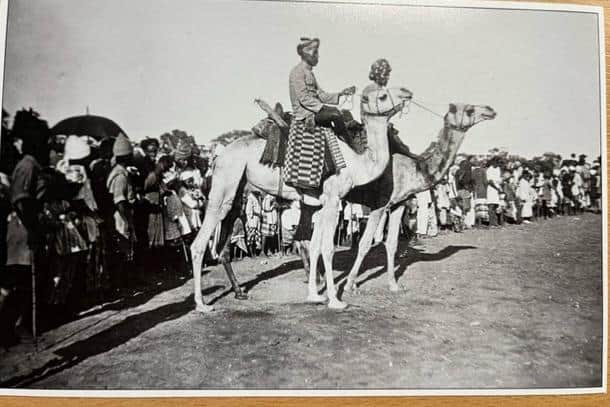

"When I got home, my mother told me that there was going to be a war.
“My father died on December 17 1916 and was buried three days later. It was a bitterly cold day and snow was falling.
"The local police provided bearers and we walked up the street slowly, in great sadness. We had a quiet Christmas; no holly or paperchains that year.
"I missed him very much.
Advertisement
Hide AdAdvertisement
Hide Ad“The following year I won a scholarship to Lancaster Grammar School.
"I travelled each day by train, leaving Hornby station at half past eight.
"I then had a fast run to get to school for nine o’clock. I returned home in the evening at half past four.
"When I was fifteen years old I joined the Royal Artillery. I was sent to Woolwich to be trained as an artificer.
“Training ended in 1925 whereupon I joined the 41st Field Battery 20th Brigade stationed at Aldershot.
"In 1928 the brigade moved to Catterick, about seventy-five miles from Wray.
Advertisement
Hide AdAdvertisement
Hide Ad“While I was at Catterick I was promoted to a paid lance bombardier, earning me another 6d per day.
“On Sunday January 20 1926 I went by train from Richmond to Southampton docks where HMT Somersetshire (9,000 tons) was docked.
"Upon boarding, I found many friends I hadn’t seen since my training days. Some were going to Aden, others to India.
"During our passage I remember the weather was often rough, especially going through the Bay of Biscay, which caused many soldiers to be seasick.
Advertisement
Hide AdAdvertisement
Hide Ad“After passing through the Suez Canal, the ship called at Port Sudan.
"An infantry regiment disembarked here for Khartoum. We wished them luck – it seemed like a place of utter desolation.
"We left Port Sudan on February 5 and arrived at Aden two days later, at about eleven o’clock at night.
"We disembarked early in the morning, a lighter taking us ashore. We wore our tropical kit complete with topee helmet.
"Our untidy and ill-fitting colonial drill must’ve been a ghastly sight – a matter soon attended to when we reached the barracks at Steamer Point.
“After getting paid, we met the chaps we were relieving and were then taken to the forts in which we were to live and work. Some of the men went to Fort Tarshyne; I and the
others went to Fort Morbut.
"The accommodation was excellent, the hut being made of bamboo with an earth floor. We had hurricane lamps for evening light.
Advertisement
Hide AdAdvertisement
Hide Ad"The fort consisted of two six inch (centre pivot) guns. We also had four eighteen pounder guns for saluting purposes.
“We soon found Aden and the surrounding area to be full of interest.
"How romantic it all seemed in the early days! Dhows sailed past my window every evening with a three note chanting as they moved across the water towards the open sea.
"Ships came in and out: Italian, French and English passenger boats as well as cargo vessels.
Advertisement
Hide AdAdvertisement
Hide Ad"The general scene was one of peaceful activity.
“During my early years in Aden, I explored the ‘mystic east’ with much eagerness.
"I visited Crater Town with its famous tanks on the hills behind the town and the dockyard of Maala, where dhows were built.
"This is considered to be one of the oldest dockyards in the world.
"Legend has it that the Queen of Sheba had her ships at Maala when she visited King Solomon.
"On the way to Crater Town from Steamer Point one passes through a narrow pass cut through a hillside.
"High on the right hand cliff face is the reputed grave of Cain. It is said that the area has been accursed since his days.
“Fort Morbut, where I lived for most of the time I was in Aden, was quite near the town as it was the fort looking out over Little Aden and the harbour.
Advertisement
Hide AdAdvertisement
Hide Ad"Aden was a duty free port in those days, so many things were cheaper here than at home.
"I bought my first camera here, an Agfa folding model, for about fifteen shillings.
"I used to do my own developing but had problems with the daytime temperature which could reach 101(F) at midday.
“Although we didn’t suffer with mosquitoes, we did have to contend with bugs, scorpions, ten to twelve inch-long centipedes and tarantula spiders – horrible things.
Advertisement
Hide AdAdvertisement
Hide Ad"On one occasion I found a foot-long centipede under my pillow.
"After killing it, I put it in an empty lemonade bottle and its tail still protruded an inch.
"From then onwards, I slept under a net which was unpleasantly hot but at least I was secure from creepy-crawlies.
"Another preventive measure we used was to place bed and table legs in tobacco tins filled with paraffin or creosote.
"This prevented different species from disturbing one’s peace.
“The water tanks near Crater Town were hewn out of solid rock and are a great age, with some authorities dating them to 575AD.
Advertisement
Hide AdAdvertisement
Hide Ad"For centuries they offered the only supply of fresh water. However, over the years they had been neglected and were only rediscovered accidentally by Lt. Playfair in 1854.
"They were subsequently repaired and opened out to give a capacity of 20 million gallons.
"When little or no rain falls, wells of brackish water were utilised.
"In fact, in my two years sojourn in Aden, it only rained once, for a few hours one morning. I sat in my armchair enjoying every drop!
“One of Aden’s exports was salt. On the way out of Aden towards the desert was the RAF station Khormaksa.
"Nearby, large areas of ground were used as salt pans. The pans consisted of large squares with built up edges into which seawater was enclosed and allowed to evaporate in the hot sun.
"The remaining salt was swept up and the process repeated. A miniature mountain of salt was always available.
“Continuing around the bay, one came to Sheikh Othman, an oasis on the edge of the desert. A busy mission hospital and school were stationed here.
"There was also a small park with trees, palm trees and shrubs and an ornamental lake.
"After barren Aden it was a refreshing place to visit.
“Once a year, a fair was held by the RAF (I have an idea on Armistice Day), with all profits going to Earl Haig’s fund.
"Camels were raced at the fair; it’s amazing how fast they travel. Over time, I acquired enough Arabic to talk to the riders in the paddock enclosure.
“They gave me the winner in every race. Consequently, I did very well, much to the astonishment of my friends!
“I had a marvellous time during the two years I spent in Aden.
"I learnt to swim merely because the water was the coolest place. We swam in a large wired enclosure on the beach; outside of this sharks were a continual danger.
“We received shipping signals and mail from the signal station.
"Mail was delivered on a boat that flew a white pennant bearing the name ‘Royal Mail’.
"The mail boat was our main interest but a vessel entering the harbour flying a national flag, indicating a man o’ war, was also important for us in Fort Morbut.
"A man o’ war always fired a salute on entering the harbour and our job was to reply.
"We did this by counting the number of rounds fired by the incoming vessel and returning the same.
"We had a saluting battery of four eighteen pounder guns on the perimeter of the fort for this purpose.
“It would seem so far that life in Aden was one long interesting holiday, but some work was required.
"This started an hour or so before breakfast, which we had at eight o’clock.
"After breakfast, we worked until around one or one thirty in the afternoon. I will admit that afternoons and evenings were fun times.
"We also had Thursdays off, plus the weekend. Except for odd emergencies and night firing at towed targets, life was relatively easy work wise.
“From time to time, we had to overhaul the four AA guns. The barrel of a six inch gun weighted seven tons, so this was a major operation.
"We had no mobile cranes, only manpower, ropes, tackle and skidding. Lists of change appeared from time to time, requiring modifications to the guns.
“In Fort Morbut we had one gun storage magazine used for out-of-date yet serviceable rifles together with ammunition.
"Sometimes we’d be told to issue so many rifles and so much ammunition to certain sheikhs who’d call for them.
"Whether they were bought from authority or were gifts of service rendered, I never knew.
“Occasionally, we had visitors to Aden, which always caused a flutter of excitement.
“On July 24 1930 Amy Johnson flew in on her lone flight to Australia, probably to refuel with the RAF at Khormakan.
"In April 1931, Lord Irwin arrived on his way home from India where he’d served as viceroy. Ghandi also visited on his way to the Round Table Conference in London.
“I had intended to leave the army on completion of twelve years of service.
"I was very unsettled as I had to make my mind up whilst in Aden whether or not to extend my period of service to twenty-one years.
"Padre Harding wanted me ordained and he applied to Mirfield and Kelham but both turned me down as they required younger men.
"The church army turned me down as well. It was the latter that brought me up short as I had a widowed mother and my main duty was to continue helping her.
"When it had really sunk in that I was not in a position to please myself, I became content. I was abroad and couldn’t look around for a job so I signed with the army and was no longer unsettled.
“On November 27 1931 I said my farewells to Aden and set sail aboard HMT Dorsetshire, arriving in Malta on December 6. Sadly, there were no more dhows in sight!”
*Abridged text taken from the journal of William Bull.